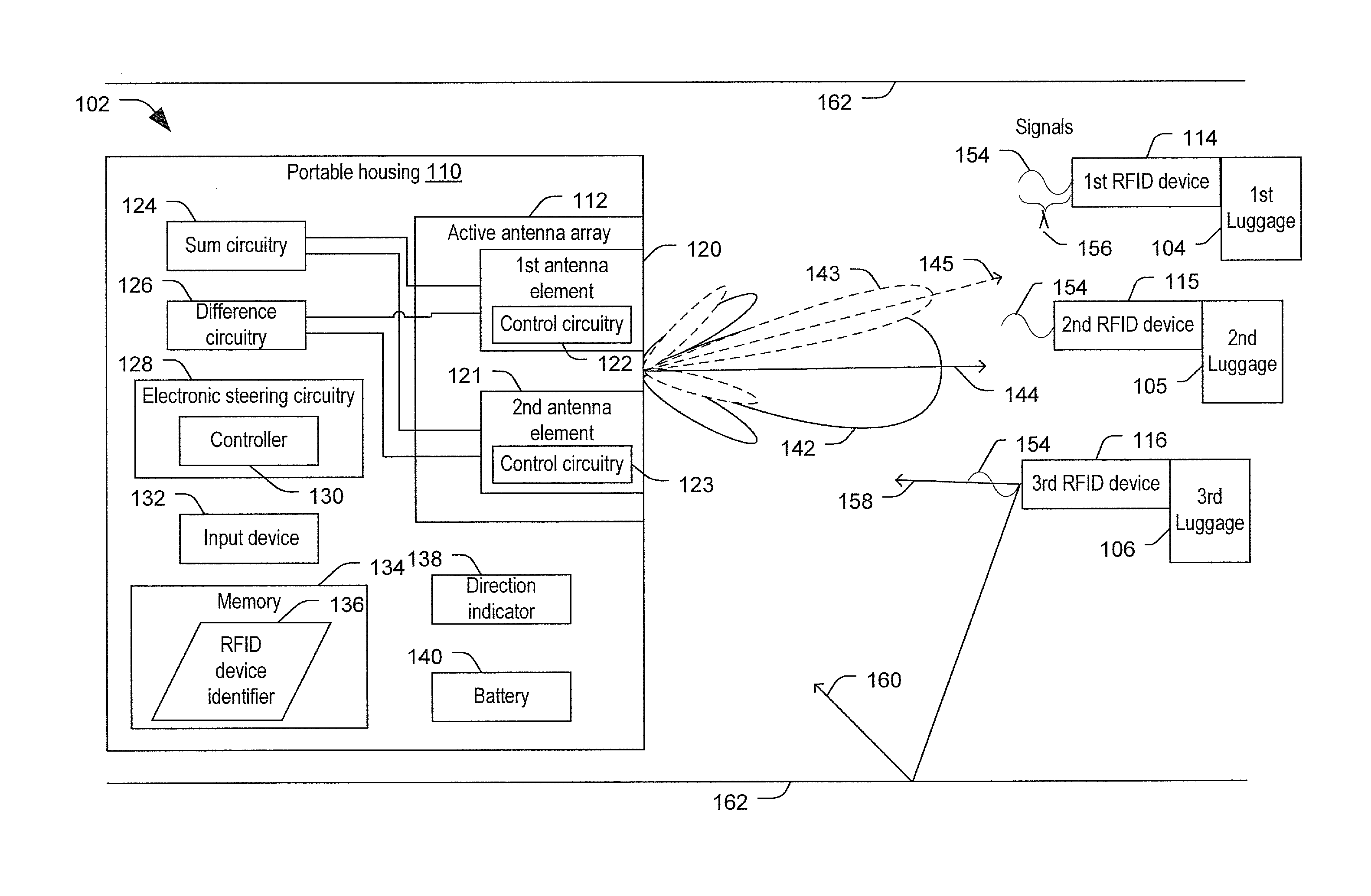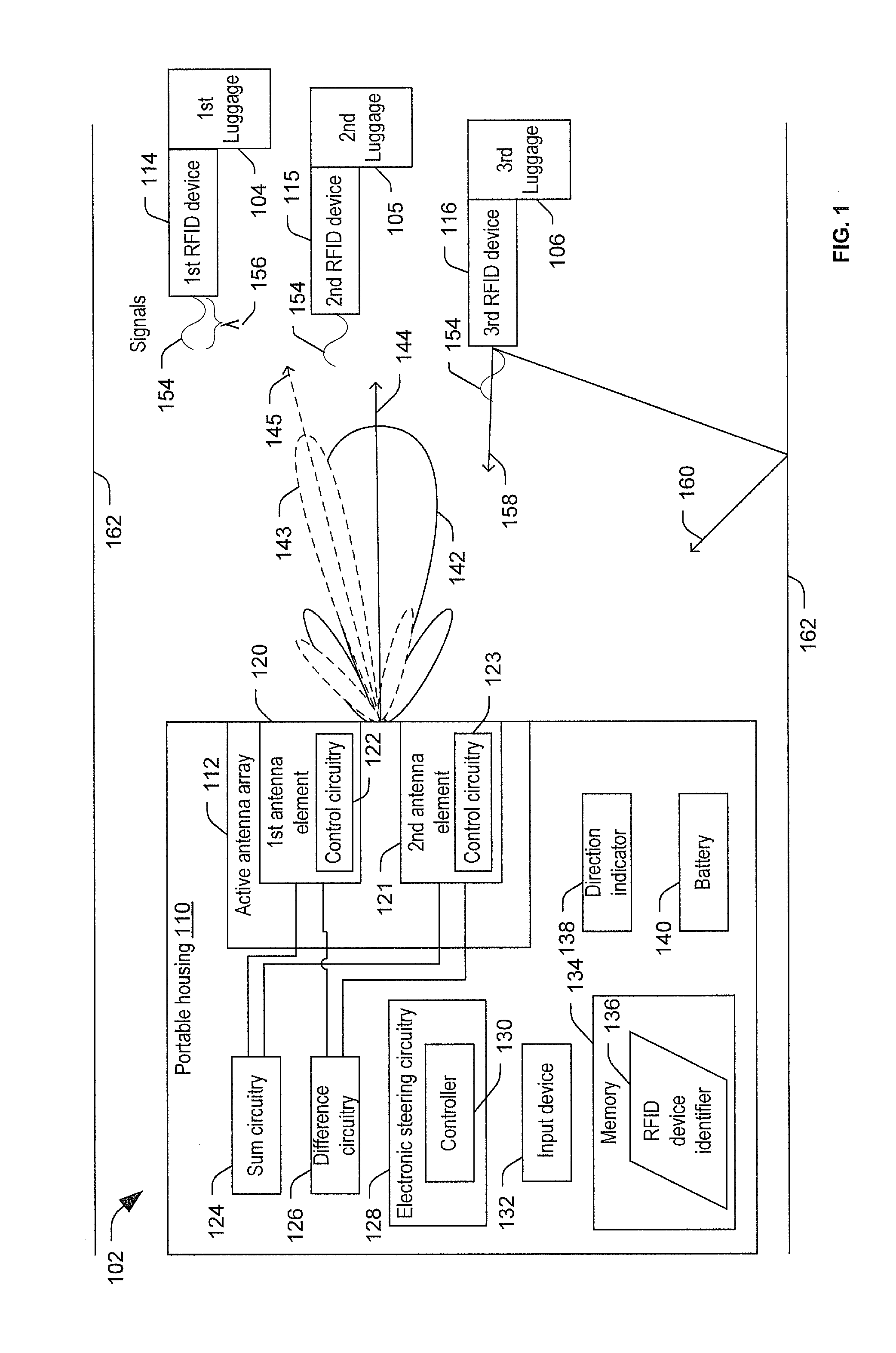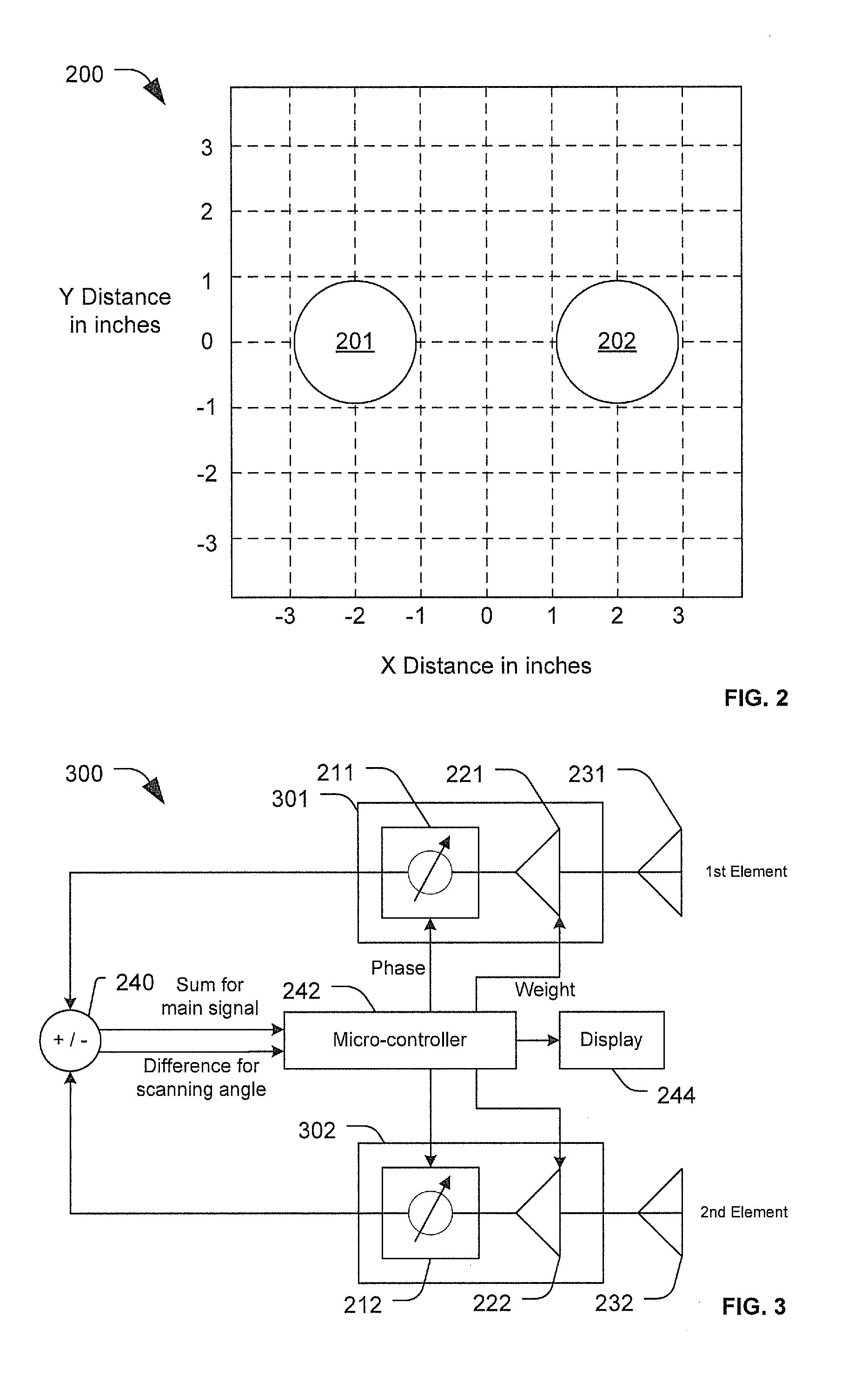Portable radio frequency identification (RFID) reader
a radio frequency identification and reader technology, applied in the direction of burglar alarm mechanical actuation, using reradiation, instruments, etc., can solve the problems of rewriting or reprogramming the rfid tags, unable to identify individual rfid tags, and difficulty in identifying responses of rfid readers
- Summary
- Abstract
- Description
- Claims
- Application Information
AI Technical Summary
Benefits of technology
Problems solved by technology
Method used
Image
Examples
Embodiment Construction
[0031]Aviation security has become an increasing concern. One aspect of aviation security that can be expensive and time consuming is matching airline passengers to their luggage. This aspect of aviation security has been particularly emphasized since the bombing of Pan Am Flight 103 near Lockerbie, Scotland in 1988, which has been attributed to a suitcase on board the flight that did not belong to any passenger aboard the aircraft. Many countries now have laws that require that all airlines match passengers on an aircraft to checked luggage on the aircraft to ensure that all luggage on the aircraft is associated with a passenger.
[0032]Manually searching for bags that are mismatched with passengers can be impractical in airport operations. For example, the process of manually matching passengers and bags can be labor intensive and may cause flight delays and add additional operational costs to airlines. Radio frequency identification (RFID) technology can store information identifyi...
PUM
 Login to View More
Login to View More Abstract
Description
Claims
Application Information
 Login to View More
Login to View More - R&D
- Intellectual Property
- Life Sciences
- Materials
- Tech Scout
- Unparalleled Data Quality
- Higher Quality Content
- 60% Fewer Hallucinations
Browse by: Latest US Patents, China's latest patents, Technical Efficacy Thesaurus, Application Domain, Technology Topic, Popular Technical Reports.
© 2025 PatSnap. All rights reserved.Legal|Privacy policy|Modern Slavery Act Transparency Statement|Sitemap|About US| Contact US: help@patsnap.com



